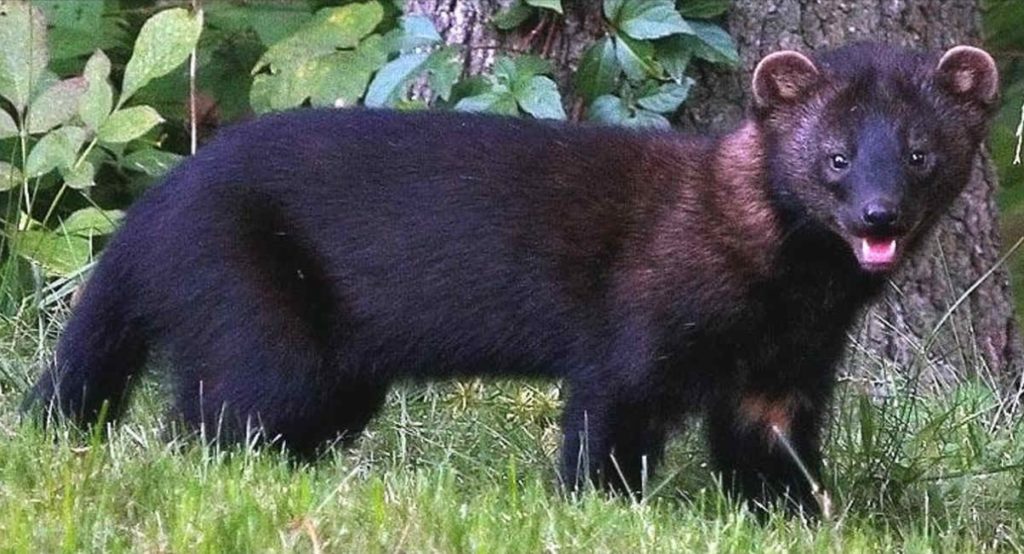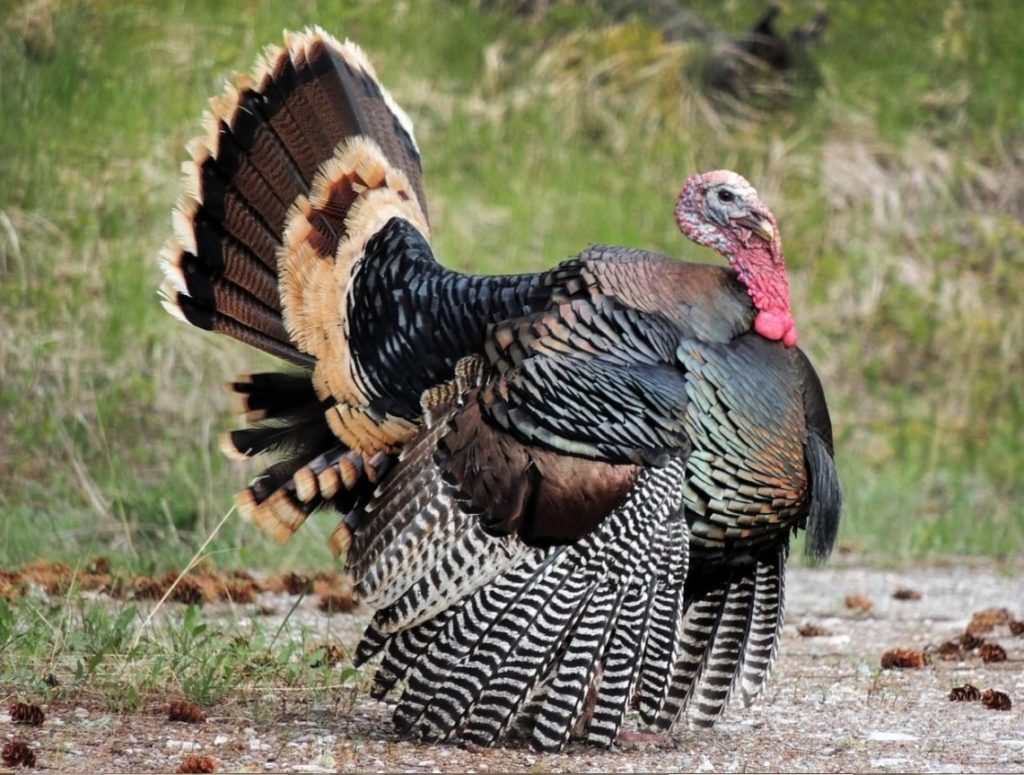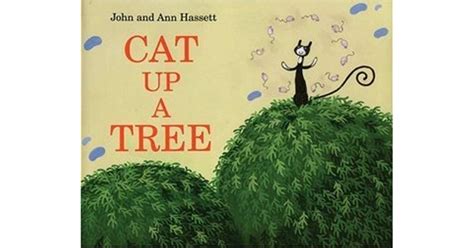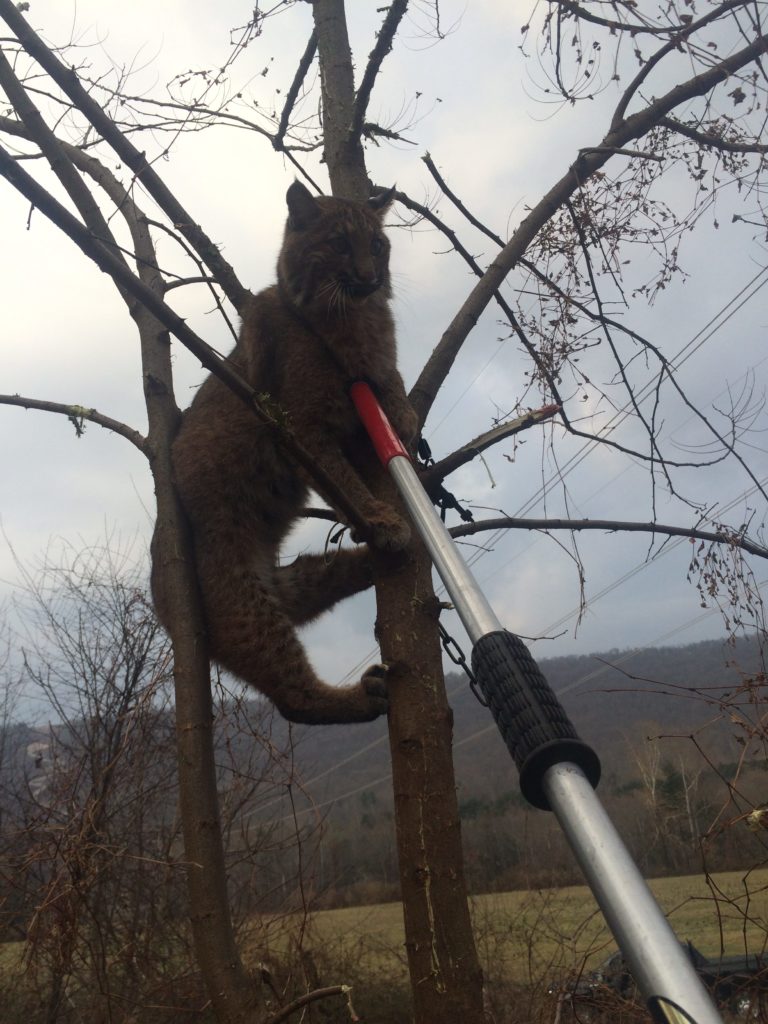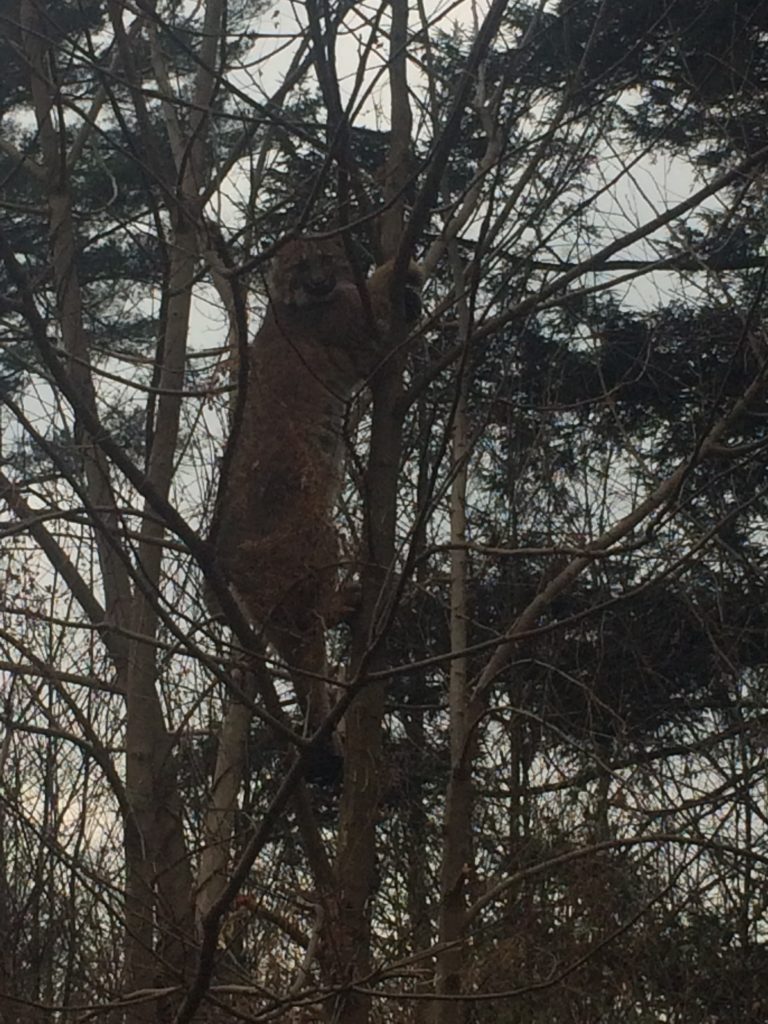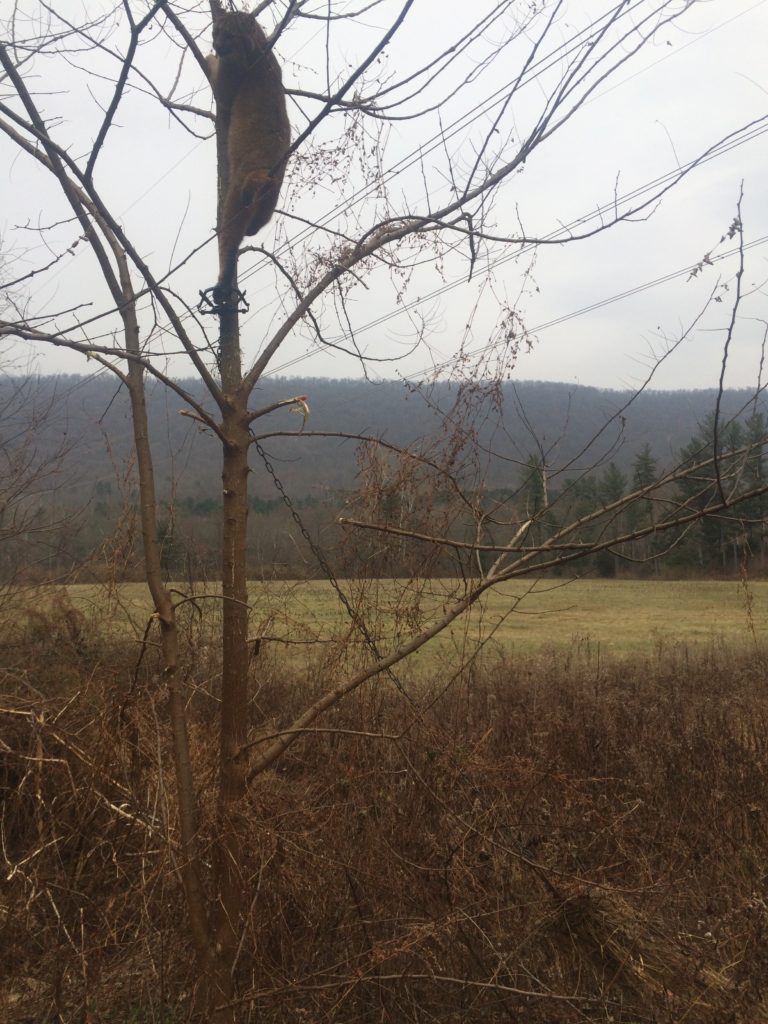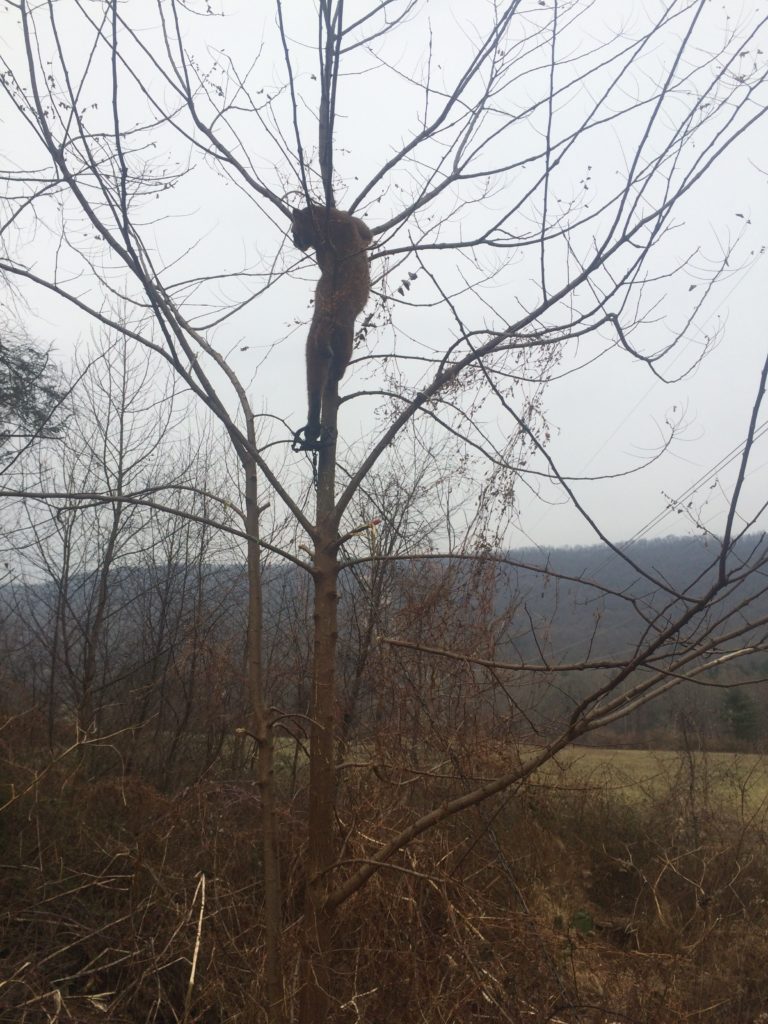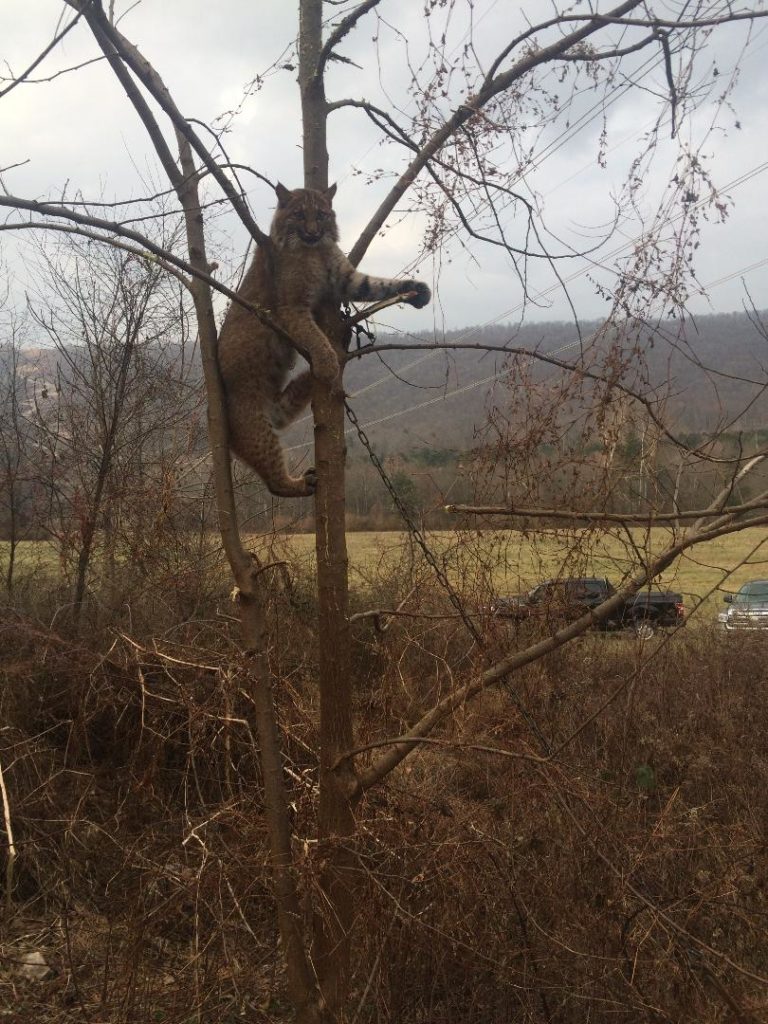Posts Tagged → fisher
Turkeys and the critters who eat them
Wild turkeys are one of Pennsylvania’s great conservation success stories. When I was a kid, wild turkeys were like a fable, a mythical animal inhabiting far distant wild lands, that could be seen and maybe heard if you were one of the lucky few. They had been decimated by market hunting in the 1800s and early 1900s. When I took my hunter safety education course at the age of ten at the old Army Reserve building out in the farmland on the east side of State College, the Pennsylvania Game Commission staff proudly showed us films of their successful trap-and-transfer program, where wild turkeys were lured with bait into the range of nets, caught, and then driven to the far reaches of Pennsylvania’s rural areas. Usually State Game Lands with fields.
From the 1970s until the early 2000s, Pennsylvania’s wild turkey population grew and grew, until they seemed to be everywhere, including well south of I-81, the old imaginary dividing line between concrete civilization and wild man country. Apparently turkeys are adaptable to concrete wilderness, because they took up urban residence all over the east coast. Not content with being colorful freeloaders along with the ubiquitous and nasty pigeons and rats in these urban areas from Massachusetts to New Jersey, wild turkeys also provide much hilarity as they attack everything that moves in a display of misguided dominance, including mailmen, soccer moms and their kids, and dogs being walked. Look up the “incident reports” of wild turkey muggings of disbelieving urbanites; lots of funny videos to go along with them, too.
So when turkey populations began to decline in Pennsylvania and parts of New York starting ten years ago, people knew it was not due to the birds’ lack of tenacity. Something new and powerful in the old bird + habitat equation was having an effect.
And in fact in many places here in PA, formerly huge turkey populations are now really low or non-existent. I myself used to look out my windows and watch three separate flocks cycle through our clover-planted yards. When I hunted spring turkeys there (northcentral PA), I would start the day surrounded by gobbling toms, and usually had a couple different opportunities to harvest one within the first few days of the hunting season. It was exciting and fun and a great way to begin the work day, although I will say that by the end of May, I was a hollow shell of a human, having run myself ragged either chasing toms myself, or calling for friends who had not yet filled a tag.
Bottom line is, those old flocks of twenty to thirty birds no longer exist. We are fortunate to see one or two wild turkeys at all on our place. And we have excellent habitat with grouse.
What caused the loss of wild turkeys in PA has generated a discussion similar to the one surrounding the demise of the once amazing world famous smallmouth bass fishery in the lower Susquehanna River. It seems that almost everyone involved has a reasonable opinion about it, and the official experts are being second-guessed by people who have witnessed circumstances different than those described by said experts. The ubiquitous use of trail cameras since 2000 has accompanied this growth in sportsman observational opinion, and very often individual hunters will use their cameras’ footage to make very compelling arguments that contradict official wildlife managers’ narratives.
Something similar happens in the aquatic environment, when thousands of fishermen experience and see something different than what they are being told through official government channels.
So now PGC is toying with the idea of releasing martens into the wilds of Pennsylvania. Similar to the fisher that was released back in the 1990s, martens are a furry little weasel-type animal that, like all weasel type animals everywhere, has an insatiable appetite for everything they can catch and kill. Not necessarily kill and eat. All members of the weasel family (wolverines, fishers, martens, mink, otters, weasels) have periods where they become “surplus killers.” That is, they will kill many more animals than they can eat, just because they seem to enjoy the hunt and the kill. Question being now, What will the new marten do to our turkeys?
Will martens do more of what fishers have so clearly done to PA turkey populations, which is to climb up into trees and eat them while they are roosted and asleep? Will martens only eat turkey eggs? Who knows? And so it follows, why release martens into our forests and farms if we don’t know what impacts they will have?
The question I have, and which I know so many other sportsmen have, is: What kind of studies have been done to date that provide confidence that reintroducing marten will have a net-benefit result, and not a net-negative/cost result?
Most of us agree with government biologists that biodiversity in general is important, and we agree that increasing biodiversity is a worthy goal. But, what are the costs and benefits of doing so? What costs and benefits do marten bring to our forests? I can imagine quite a few costs, mostly impacts on ground nesting birds (like wild turkeys, grouse, pheasant, woodcock, and a zillion species of cute little migratory dickie birds) that are already under tremendous pressure from overpopulating (thanks to urban sprawl) raccoons, skunks, possums, feral cats etc., and I wonder if the benefit of a few hundred citizens annually catching a view of one of these cute and elusive furry weasel-like animals is worth the inevitable costs.
One of the things we must struggle with today is that, as much as we would like to return to the pristine conditions of three hundred or four hundred years ago, where humans had a measurable but relatively minor impact on the environment, the reality on the ground today is totally different. The social carrying capacity among different human groups is one consideration. The carrying capacity of other wildlife is another consideration. I imagine that before people go petitioning or pushing to have these newest predators released back into our forests, we should know what their likely impacts are going to be first. I am willing to sign a petition to have PGC thoroughly study this subject, but I would feel irresponsible to ask the agency to jump before knowing what lies ahead and below.
I will say that I like knowing fishers are in our forests, but I do not like the tremendous impacts they have had on squirrels, rabbits, and turkeys. Everywhere a fisher takes up residence, the small game and turkey populations drop dramatically. Personally, I would prefer to know that there were a few hundred fishers living across Pennsylvania, instead of the thousands we now have that are over-impacting a lot of other equally valuable wildlife (and I enjoy recreationally trapping for fisher every year).
I am not saying that adding martens to Pennsylvania will necessarily be pouring fuel on the fire burning up wild turkey populations, but we really should know. That is the responsible thing to do.
Turkey season finally arrives
Spring turkey season has finally arrived. No, no, we are not talking about the season of the political turkeys, the various state governors around America who are artificially extending their unconstitutional stay-the-f*ck-at-home “lockdowns” into July without any merit or cause. What we are talking about is spring gobbler season.
No, no, no, not the Cookie Monster-type of gobbler, like California politician Nancy Pelosi eating her wall freezer full of gourmet ice cream while Americans can’t buy flour or toilet paper.
We are talking turkey here, a gobbler being a wild male turkey that gobbles to locate hens he can breed with. He gobbles as he walks through the woods and fields, and hunters call to him with hen calls, to lure him close enough to shoot with a shotgun. In the head. It is a huge challenge with a hunter success rate of about 5%-10%. Not a real high probability of success, but nonetheless by the end of May, when the season ends, hundreds of thousands of Pennsylvania turkey hunters will be walking disasters. They will have gone out daily at 4AM, hunted until 7:30 or 8:30AM, whereupon they will have gone to work for the day, and done it all again day after day. Until they get a bird or they are haggard skeletons and cannot function any longer.
Spring turkey hunting is demanding and tough to do well, and even the best callers get skunked. It is nonetheless a challenge that so many hunters gleefully embrace, however, because the rewards of simply trying are so high. Nothing else is like it.
One of the challenges facing spring gobbler hunters especially is a fairly new one.
Pennsylvania’s turkey populations are way down from historic highs about 15 years ago. Some biologists attribute this measurable decline to a continuing maturation of Penn’s Woods. That is, the continued growth of Pennsylvania’s mature forests, which provide good food, like abundant acorns, but very poor cover habitat for wild turkeys. Heavily cut forests that result in areas of impenetrable thickets of brambles and small tree saplings provide the kind of safety and nesting cover that wild turkeys require. Unfortunately, most timber logging is done more for the appearance of good looks, like lots of low-value trees left behind, than for valuable timber regeneration or wildlife habitat.
A second factor that has caused turkey numbers to drop is the relatively new presence of the fisher. The fisher is either a huge weasel or a small wolverine, but it is fully representative of the ferocity and toughness of both its cousins. It is a native predator here in Pennsylvania, but it was wiped out by the late 1800s like so many other cool animals that competed with new farmsteads built to feed families. Capture-and-release programs in the 1990s and early 2000s resulted in wild fisher populations expanding their territories and populations across the east coast. And if there is one word to describe the fisher, it is voracious. These things eat and eat and eat! They are especially adept at hunting animals in trees, like roosting turkeys.
So over the past ten years or so, turkeys have become less vocal in order to avoid being detected and targeted by predators. For hunters, this means a tougher time locating turkeys and doing the classic back-and-forth call where the gobbler struts in to within range gobbling, strutting, and all fanned out. These days, hunters can easily call, hear nothing, and after ten minutes stand up because they think nothing is moving, only to see a gobbler rocketing its getaway through the woods.
Gobblers and hens alike are coming in silently to hunters’ calls more and more, which requires hunters to just sit patiently and wait, and wait some more. No movement at all. No sounds. Just wait. Patience will kill more turkeys than all the fancy calling can. Make a few clucks, a few purrs, and just sit back and wait.
The Pennsylvania Game Commission staff have studied the stomachs of fishers, and they have reported back finding very little evidence of turkeys in them. Well, why would anyone expect to see evidence of wild turkeys in the stomachs of fishers if there are so few turkeys left? A single fisher can and probably will, given the chance, kill and eat dozens of wild turkeys every year. It would not take many fishers to put a choke hold on wild turkey populations. How many of those successful fishers were studied?
In any event, turkey hunters noticed a dramatic decline in wild turkey numbers beginning precisely with the expansion of the newly released fishers. That is a strong statistical correlation that is simply impossible to discount, regardless of what a handful of fisher stomachs have yielded up.
Finally, pathogens like Lymphoproliferative Disease Virus (LPDV) and West Nile Virus are known to be affecting turkey and grouse populations in different areas, and Pennsylvania is in a region where both these diseases are represented. LPDV is hammering wild turkey populations in New York State, so it may well be hurting ours, too.
Good luck to all the turkey hunters out there. Hunt safely (with your back up against a tree, a root ball, a big rock), don’t stalk turkey sounds but rather call the turkey to you, and only pull the trigger when your eyes have confirmed absolutely that the shotgun barrel is pointing at a live red, white, or blue turkey head with a beard attached to it. Have fun, and if you are like me most years, and you have near-misses and run-ins with wily tom gobblers, enjoy the time afield for what it is at its simplest – a walk with God, enjoying His incredible beauty at the time of Earth’s re-birth.
This day a year ago while trapping: Cat up a tree!
Cat Up a Tree!
Text and Photos by Josh First (copyrighted)
I dislike trapping in rainy conditions, because it is uncomfortable, messy, and technically difficult, due to trap sets needing constant fixing up; and I really dislike processing muddy critters. Mud-covered fur is time consuming, and usually it is not worth it in my tight schedule. So from 2018’s trapping season opening day in late October, I waited six weeks, until a brief rain lull in mid-December, to put out some carefully planned traps.
Though I was aiming mostly for canids like fox and coyote, both bobcat and fisher were a reasonable hope. I have caught bobcats in and out of season in the past, but never a fisher. These are two neat animals worth working hard for, and each of which will quite willingly enter baited cubbies where foot hold traps can get some shelter from rain and snow.
So on the Wednesday afternoon before that Saturday bobcat and fisher opener, a half-dozen footholds (cubbies and flat sets) and a few large cage traps were set in strategic places near where I had seen fisher tracks or bobcats across a 100-acre area of mixed farmland and woods in Dauphin County. Bait is used in the cage traps to pull in the inevitable and limitless possums, skunks, and raccoons, so that, hopefully, only the cool critters find the footholds. And both bobcats and fishers will enter cage traps, so they do serve double duty.
One pass-through pee post set was put in a location where I have previously caught coyotes, foxes, and raccoons. It is at a corner of a dirt farm road, a woods road, a hay field, and brushy-hedged crop field where heavy woods meets an active agricultural area. Just about every local furbearer walks the brushy area, this road, and the field edges leading to it.
Coyote pee and coyote gland lure were put on top of a two-inch-thick dry pine limb sticking up 14 inches, placed at the seam where the goldenrod meets the farm road. A few pieces of goldenrod stem on the other side created the pass-through effect, so the animal’s body would line up with the hidden trap just exactly so. About eight inches away from the post an offset MB 550 attached to an eight-foot heavy chain linked to a heavy two-prong coyote drag was bedded level atop soft goldenrod tops to protect the trap from freezing to the wet dirt underneath, then covered judiciously in waxed dirt, then finished with more soft goldenrod tops and weed tips blended on top. The trap was perfectly “blended in” and hidden from sight.
The chain was stretched out away, into the reverting goldenrod field, and well covered and camouflaged with weeds, and the rusty-brown colored steel drag itself unobtrusively hooked into the dirt. With four heavy swivels well spaced between the trap and the drag, I felt confident that whatever would step on the trap pan while passing between the weeds to smell the pee post would commit its full weight, and be safely held fast, no matter where it went afterwards. I expected the animal to head directly to the nearby brushy hedges, where the grapple and chain would immediately become entangled, thereby holding the animal for the next 24-hour trap check.
Usually predators take a couple days to fully investigate my traps, and when setting this on a late Wednesday, I anticipated catching something in one of the sets on Friday night/ early Saturday morning. Though aiming for a bobcat, fox, coyote, or fisher, the truth is I had put off trapping so long that season that I would have been happy to catch just about anything.
The next day, Thursday, I did a cursory trap circuit check in my truck, looking out the window while driving past set after set. “No…No…No…footprints all around but no step on the pan…no…no…nothing” as I went by each trap location.
Pulling up to the pee post set, my eye was immediately drawn to the pee post itself lying on the ground, though the trap bed itself did not appear disturbed. Usually the post is knocked over by the chain after an animal has stepped on the trap and fled. So I got out to check, and was not surprised to see the drag gone. Following an obvious path of bent weeds and scuffed dirt leading away towards the closest brushy forest edge, my eyes naturally looked along that edge for a hung-up drag and critter.
With my hands on my hips, I stood and kept scanning the brushy woods-field edge. I was unable to locate anything, and felt mystified about how the critter could have escaped beyond such a thick, natural entanglement area. Mystery remained until a hiss to my right reached my ear, steering my eyes in that direction.
“Why is that long-legged grey fox up in that honey locust like that?” was my first thought.
Then another thought followed the first: “Why does that grey fox look like a big cat?”
And then the bobcat came into focus. It was a nice sized young male, probably 25 pounds, about six feet up in a young honey locust, a tree that has plenty of sharp thorns and very hard wood. The drag was just touching the ground, and the chain was wound about the lowest branches.
OK, I thought, I’ll have this resolved in a few minutes. Seemed like no big deal to pull down the cat, use the catch pole to hold it steady while I released the trap from its foot and let it go unharmed.
Fast forward an hour, and each time I had tried different ways to bring it down out of the tree unharmed, the cat had moved farther up. With bobcat season two days away, by law the cat had to be released, but I was unsuccessful with each solution I tried.
Fretting and scratched by the locust thorns, I left, did some work, and returned a few hours later, hoping the cat had climbed down and was entangled in the ground brush nearby. On the ground it would be easy to release using a catch pole. Easier than up that tree!
But when I got back, the bobcat was still up the tree, and climbed yet higher as I approached it.
Time for Plan B, which is where I admit that I need help. Usually takes me a long, long time to implement Plan B, and so I called the Pennsylvania Game Commission southeastern regional office. At first the dispatcher congratulated me on catching the bobcat, but then moments later expressed his sympathy for me having to release such a fine trophy, as the season was yet to begin. He forwarded my message to a local Game Warden, who then fairly quickly met me right at the honey locust. In fact, he arrived so quickly that I could not help but wonder if he had been watching me the whole time, either chuckling at my clumsy efforts, or waiting to see what else I might do, or both.
“Thank you for coming. When my kids were little, their favorite book was Cat Up a Tree! And here it is in real life. Should we call the fire department?” I said to Game Warden Scott Frederick, half-jokingly. In that colorful book, the fire department saves the day by saving the cat stuck up in the tree, and we (and how I so liked the ‘we’ part) did indeed have a daggone cat way up in a tree. But unlike the book, we had no long ladders, or hero firemen, by the honey locust tree that day.
I asked my wife to film our escapade, but under questioning I revealed that pretty much anything could happen to anybody around this, so she said something like “No, I’m not recording two idiot men playing with matches.” I think her imagination had the warden and I emerging from the dense, high brush scratched head to toe, our clothes in ragged tatters, like some cartoon involving the Looney Tunes Tasmanian Devil. She wanted no part of it. This is why women live longer than men.
Warden Frederick tried to the untangle the chain and reach the animal, but with each new inch of loose chain, the bobcat sensed freedom and used the slack to climb ever higher. Upon reaching a tight chain again, he would stop his ascent, alternating between hissing at us and letting fly with whatever he could rustle up in his bowels. I came to learn that bobcats have an impressive amount and array of bad smells stored inside them. Neither Warden Frederick nor I smelled peachy at that point, but I gave in and laughed at him when he really got it good from the cat.
Eventually we had tried and tried every which way to get the cat down unharmed, the day waxed late, and so we decided that if the cat would not come down, then the tree had to come down.
A honey locust is a hard, tough tree, a pioneer species with twisting grain and sharp hooked thorns. Oftimes while being sawed, they don’t fall the way you think they will. In addition to its loud scary noise, a chain saw would remove too much wood too quickly to allow us to fully control which way the tree would fall, and a hand saw was too slow. So we used an axe to drop the tree, one carefully placed chop at a time. This gave us the best control over the tree’s slow descent, but it was sweaty work, and directly beneath the bobcat. So I let Warden Frederick do it.
Meanwhile, the bobcat climbed to the very top of the tree, clinging like a lookout in a ship’s crow’s nest, and swayed to the rhythm of the chop-chop-chop below.
As the tree gave way to the axe and slowly sank to the ground, the bobcat sensed its getaway approaching. But Warden Frederick was waiting with a catch pole. While I wish I had some humorous Game News Field Note material here to describe what happened next, the truth is Warden Frederick properly and quickly looped the bobcat’s shoulder and neck, under the armpit, thereby safely pinning the animal to the ground without risk to its esophagus (cats have really weak throat areas and they must be handled carefully). I got some last quick photos, threw a blanket over the bobcat to calm him down (the bobcat, not Warden Frederick), and then easily pulled the trap off of its foot.
Both of us inspected its foot and leg for damage, and seeing none, I stepped back, pulled the blanket, and the catch pole loop came off the bobcat. As many other trappers have experienced when releasing a trapped bobcat, this one sat on its haunches and hissed at us. He thought he was still stuck. Eventually he turned and fast- walked into the brush.
“Well, that’s it, I’m now officially jinxed, or ‘lynxed’,” I said to Warden Frederick. “From here on out I will catch only possums and skunks for the rest of the season.”
And in fact, for the rest of that epic rainy trapping season, such as it was, I caught a grand total of just five possums, one skunk, and one raccoon. It was my worst trapping season, numbers-wise, in many years. But in hindsight, it was also pretty rewarding to watch the Game Warden work like that. Both hard and smart, I mean. Citizens don’t get to see our public servants perform these kinds of feats very often, and with a good nature to boot. So in that sense, I had a uniquely good season. Thank you, Warden Frederick. Now I can’t wait for mountain lions to move into Pennsylvania!
[Why do I trap? I trap to save ducklings, goslings, baby songbirds, nesting grouse, woodcock, and turkeys from an endless number of ground predators like skunks, possums, raccoons, foxes and coyotes, all of which continue to pulse out from suburban sprawl habitats in artificially high numbers. These artificially high numbers of predators do tremendous damage to ground nesting birds, and basically cars and trappers are their sole adversaries. So if you are against trapping, you must hate cute little ducklings. Foothold traps do not crush bones or kill animals, they simply hold them, and as we can and did here, animals can be released from footholds totally unhurt]
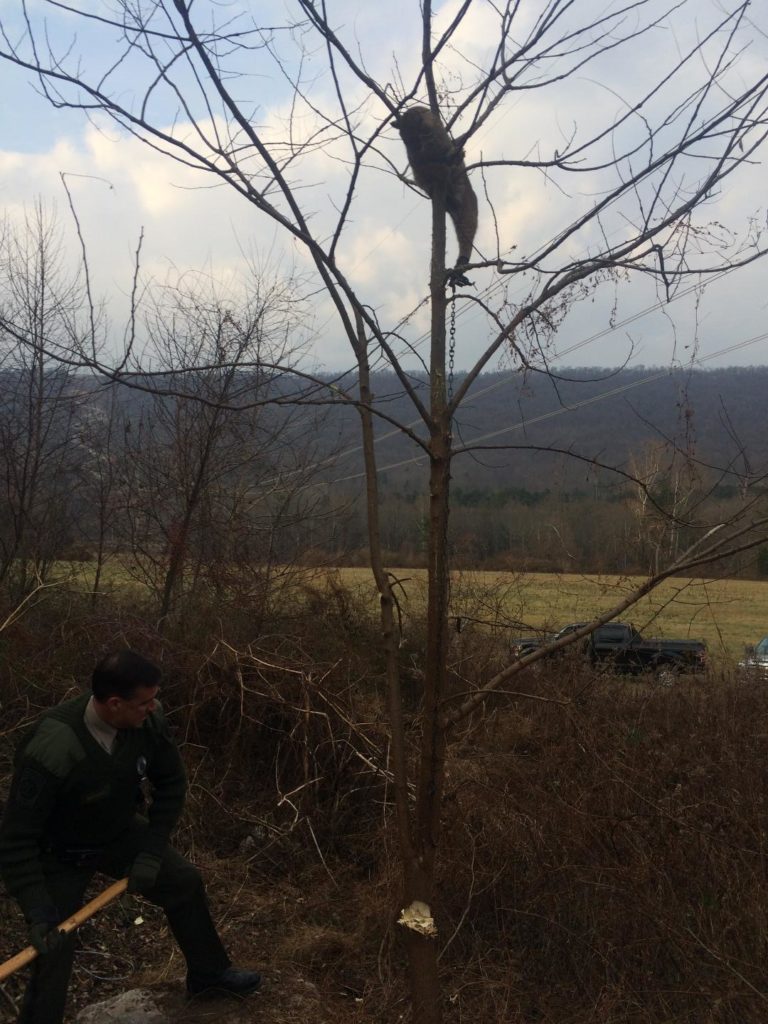
If you ever want to feel like you are getting your tax money’s worth, look closely at this photo of PA Game Warden Frederick chopping at that honey locust. Except that the PA Game Commission operates on hunting license fees, timber sales, and natural gas leases! No tax money goes to the PGC, and yet they provide so many taxpayer services.
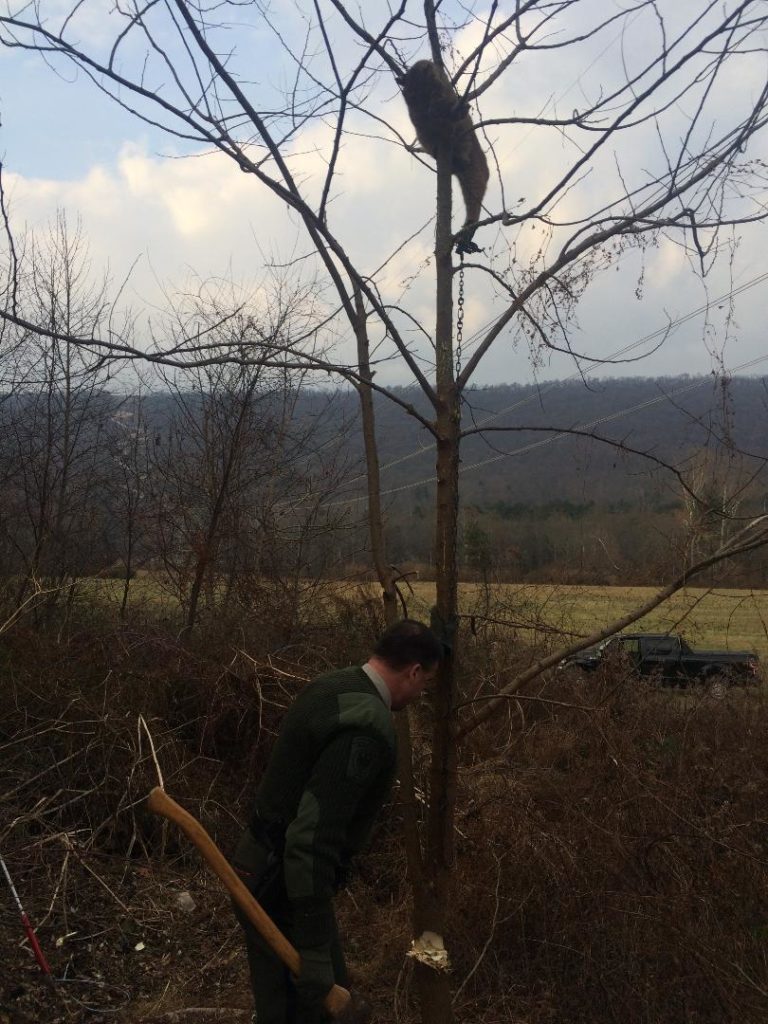
The four swivels and the long chain are visible here. The swivels prevent the chain from binding as the animal moves around, which gives the animal complete 360 degree movement. This is important so the animal does not torque its leg or hurt itself trying to get free. The long chain is needed to get hung up quickly in brush
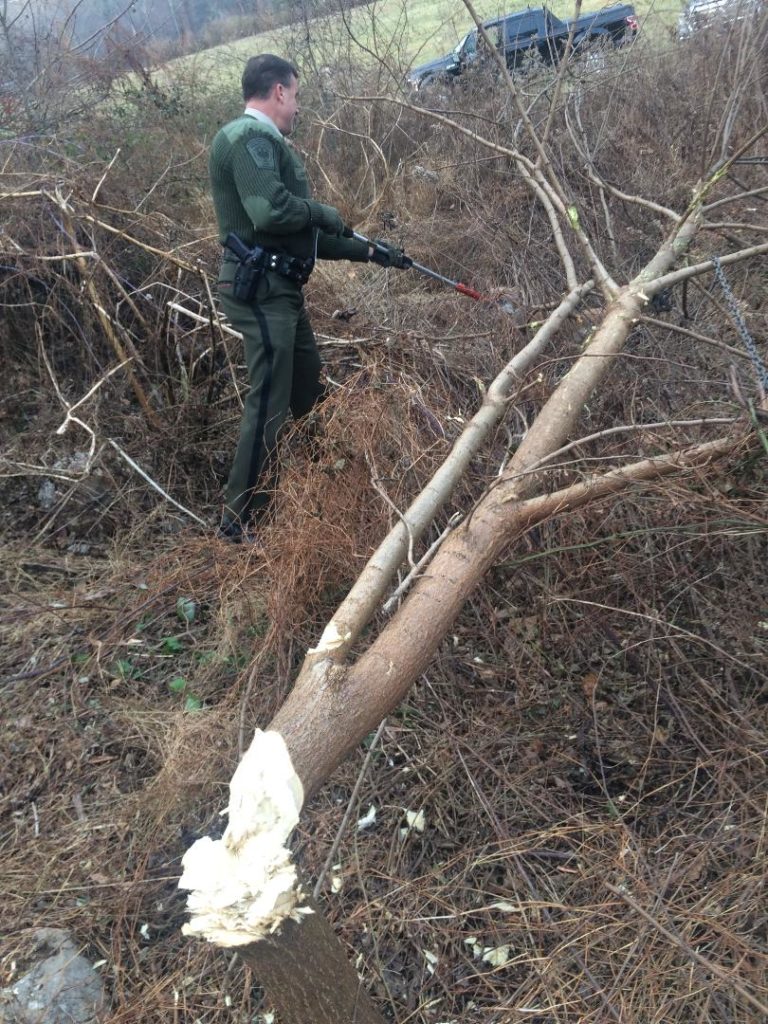
The unharmed bobcat can be seen hissing at Scott, who has the catch pole loop around its upper body, pinning it to the ground. After taking this picture, I threw a blanket (Scott’s, not mine) over it to calm it down, inspected its leg for any damage, and when we each determined the animal was not hurt, Scott then released it. Using a catch pole on a bobcat requires getting the loop under its armpit and around the neck, so the esophagus is not damaged.
Our Wildlife Management Comments Submitted to the PA Game Commission
Dear PGC Commissioners,
In so many ways the Game Commission is on an exciting path, really moving forward on policy, staff culture, and scientific wildlife management. It is an exciting time to be a hunter and trapper in the great state of Pennsylvania, thanks to you. Hunting and trapping are supposed to be fun, and the PGC should be able to maximize opportunities without sacrificing the natural resource base. If anything, the agency has been perhaps too conservative, too cautious. In that vein, here are some small suggestions for improving hunting and trapping in Pennsylvania:
a) Make all small game seasons concurrent, start them in late September or early October and run them unbroken until mid February. The current on-again-off-again schedule is silly, an artifact from many decades ago. Our current small game hunting schedule leaves kids and oldsters alike out in the cold with nothing to hunt if they can’t get to deer camp, or if they do kill a deer and want to keep on hunting. Hunters deserve maximum opportunities that do not degrade or put wildlife populations at risk, and adding a few extra days won’t hurt anything, but they will help hunters tremendously. Put another way, the risk of changing this is very low to non–existent, and the benefits are huge. Well, what is the risk, really?
b) Allow the use of snares in rural WMUs and/or on private lands. Cable restraints are an important trapping tool under any circumstances, and especially so as we experience ever-increasing freeze-thaw-freeze-thaw winters, with rain no less. These weird winter conditions render traditional footholds nearly useless both early and late in the season. Cable restraints can function better than footholds under those conditions, but they just are not sufficient for the big coyotes we are encountering. Getting coyotes into cable restraints is tough enough, and holding them there is even tougher. Chew-throughs of our cables are common, where a snare would positively catch the coyote and hold it, bringing it to hand and into the bag. In rural areas (or on private land) there is a far lower expectation or risk of a pet or feral dog or cat being caught. We are ceding too much to the anti-trappers by prohibiting snares where they can do the best good. A pet is an animal that lives in a home. Eliminating a very useful tool because of some vague or low-probability worry is not good policy. We can do better, and snares are much better than cable restraints in general, and particularly in the northern Big Woods areas. Also, CR certification can only be done right in person, through hands-on training. This online certification is going to lead to problems, especially where CRs are used like snares.
c) Allow the use of body-grip (Conibear) traps outside water courses, specifically on running-pole sets for fishers, bobcats, and raccoons. Like the snare situation above, our trapping regulations are unrealistic, they are too conservative, penalizing law-abiding trappers because of vague fears that under reasonable circumstances will not happen. Securing body-grip traps up off the ground is well out of the reach of dogs and domestic cats. Separately, if a pet owner lets their animal out the door to run free, where it can trespass, be hit by a car, be eaten by a coyote or fox or hawk, or get hurt in a fight with another animal, then they do not truly care about it and it is not a real “pet.” Pennsylvania trappers do not deserve to be hurt because of others’ irresponsible behavior. Elsewhere in America, the use of bodygrips on running pole sets is very effective and humane. We can stick with the #160 size as the maximum.
d) Extend the fisher trapping season and areas. Trappers in Berks and Lebanon Counties have told me of catching fishers in their sets, and we are seeing them in Dauphin County. There is no good reason why we cannot extend where and when we trap these abundant predators. Incidentally, they eat bobcats and turkeys, and it would be silly to expect fishers to simply harmoniously co-exist with other animals. They are a voracious predator and they will have a disproportionate impact on predator and prey populations alike if allowed to expand unchecked. Fishers are cool animals and I am all for having them in our ecosystems. What is lacking now are the mountain lions and wolves that in the distant past would have eaten them, and kept them in balance with other wildlife. We humans now fulfill the role of lions and wolves. Let us at ’em.
e) Make sure bobcat populations can sustain these long trapping and hunting seasons. We are seeing a lot less bobcat sign and fewer bobcats on our trail cameras. This was the first year we did not get a bobcat through either trapping or calling in 2G and 4C, and while this may be just our observation, we are concerned. If bobcat harvests must be reduced, then we prefer that it come out of their hunting season. There is a ton of hunting opportunities in Pennsylvania, and not a lot of great trapping opportunities. Heck, muskrats are practically extinct, coyotes have eaten most of the red fox in the southcentral, and possums are clogging nearly every trap. Let us keep our bobcat trapping intact.
f) Reinstate concurrent buck and doe deer hunting. We are seeing a high number of deer nearly every place we hunt (WMUs 2G, 4C, 3A, 5C, 5D). Deer populations are definitely lower than in 2001, and deer are harder to hunt now than then, but the quality is unbelievable, and the herd can sustain both doe and buck hunting. Pennsylvania is now a real trophy destination, so keep up the scientific management, which would include allowing hunting on Christmas Day.
g) Expand the bear season by one day in WMUs 2G and 4C, or rearrange the season entirely. There are an awful lot of bears everywhere, especially in 2G and 4C. On the Friday before bear season starts, we see loads of bears having tea and crumpets in the back yard. They are watching football and hanging out leisurely in reclining chairs. Come Opening Day through Wednesday, we might see the hind end of a bear or two, or we might occasionally harvest a bear, if we work hard enough. By deer season opening day the following week, the bears are back to having tea and crumpets in the back yard, hardly disturbed by all our hunting efforts. Another way to address this is to make bear and deer seasons concurrent, at least for one week, and perhaps start that concurrent season the week of Thanksgiving.
h) Do more to end wildlife feeding. We continue to see mangy bears, and deer baiting under the guise of “helping” wildlife through artificial feeding. It’s not good for the animals, and can actually be bad. People also feed wildlife to entice game animals away from (other) hunters. This is a cultural practice that PGC needs to do more to end, through education and enforcing the bear feeding regulation.
Thank you for considering our comments. We do love the PGC and admire your field staff, especially.
Josh and Isaac First (father and son)
Harrisburg, PA
Hunting licenses, 1976 and 2015
Since my first hunting license adorned my back way back in 1976-1977, a lot has changed in the Pennsylvania landscape.
For example, wild game then so abundant that you could go out and shoot a couple for dinner is now practically extirpated.
Why pheasants and quail disappeared from Pennsylvania is a big debate with no clear answers. Loss of farmland to sprawl, low density development is one. Changes in farming practices is another; fallow fields had the best habitat. A plethora of winged and four legged predators cannot be discounted. Successfully rebounding populations of raptors like hawks and owls for sure ate a lot of plump pheasants. But why a sudden and dramatic crash?
Conservation successes since 1976 are plentiful and say a lot about wildlife biology. Wild turkey populations, fishers, bobcats and other animals once thought completely gone are now firmly in our lives, whether we see them, or not.
An interesting dynamic is playing out at our hunting camp. This year we have a virtual carpet of oak and hickory seedlings unlike anything we saw over the past 15 years we’ve owned it. Why?
Conventional wisdom is the deer population is low, and it’s true that it’s lower than it has been in 15 years. That is, deer are known eaters of acorns and tree seedlings. Fewer deer means more of both.
However, another factor seems to be playing out with these newly abundant tree seedlings. Where we once had an incredible overload of tree rats, aka squirrels, the new fishers have eaten them all. Like all of them. Not one tree rat remains in our carefully cultivated forest of white oaks. We see fisher tracks. We neither see nor hear squirrels.
As squirrels are known eaters of acorns and hickories, it stands to reason that their absence means more acorns and hickories hatching into baby trees.
Add a long icy winter that appears to have crushed our local wild turkey populations, also known for eating nuts, and the right conditions emerge to help a forest rebound and grow some new stock, a huge challenge we aggressively tackle every year.
So, my son getting his first hunting license yesterday is now entering a landscape that in some ways is just as dynamic as the one I began hunting so long ago. What a difference these landscapes were and are, and who would’ve guessed the fishers would be responsible for oak and hickory forests regenerating?
A lot has changed in our wildlife landscapes, and yet not much has changed in my lifetime. Different animals, same kind of population changes, variations, pressures. One thing I keep reminding myself: It’s all natural, these changes. And while some are painful to see, like the loss of pheasants, other opportunities open up. Never would I have imagined in 1976, nor would any PA Game Commission staff, that in 2015 my son would get a bobcat tag and a fisher tag with his license.
Totally different opportunity than chasing pheasants in corn fields, but still good.
